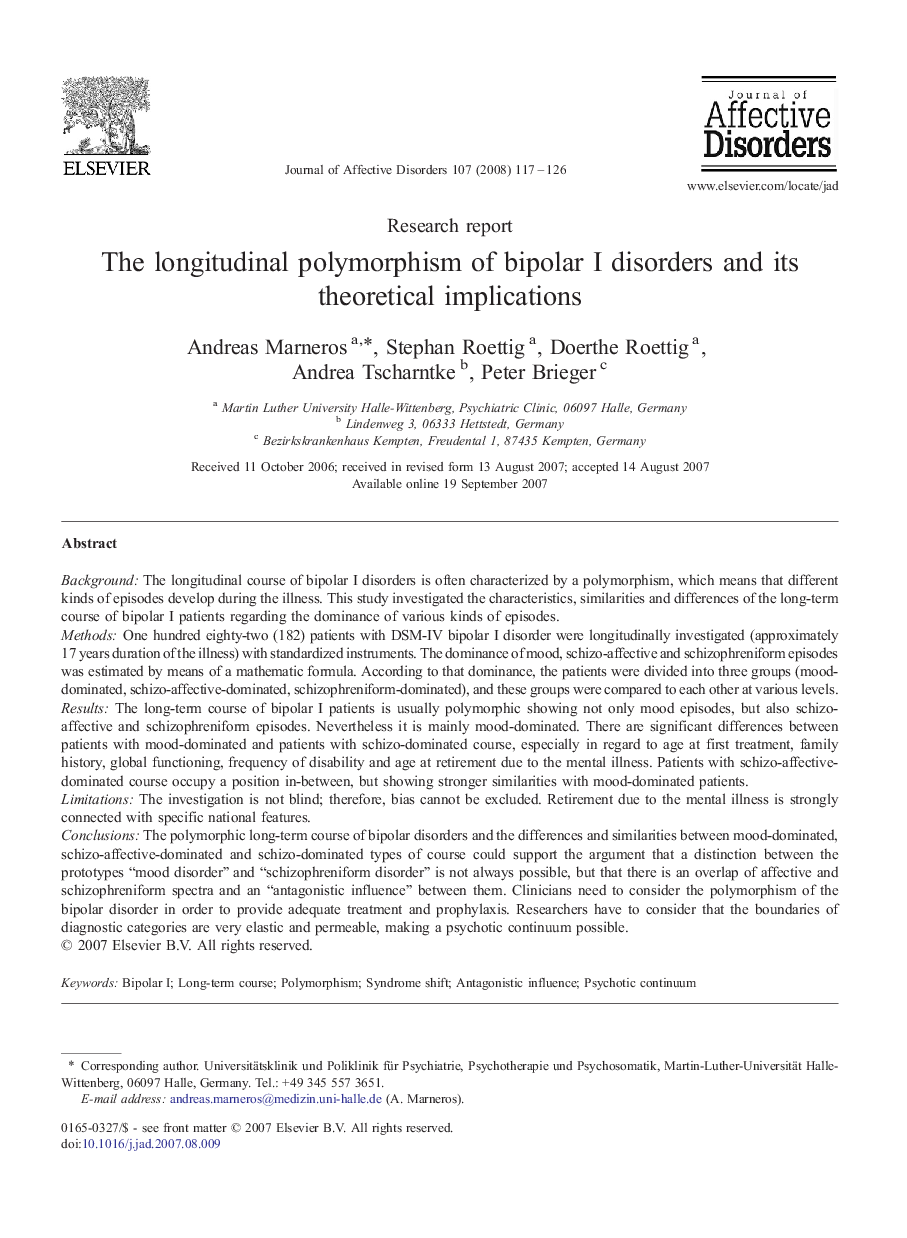| کد مقاله | کد نشریه | سال انتشار | مقاله انگلیسی | نسخه تمام متن |
|---|---|---|---|---|
| 6236843 | 1608214 | 2008 | 10 صفحه PDF | دانلود رایگان |

BackgroundThe longitudinal course of bipolar I disorders is often characterized by a polymorphism, which means that different kinds of episodes develop during the illness. This study investigated the characteristics, similarities and differences of the long-term course of bipolar I patients regarding the dominance of various kinds of episodes.MethodsOne hundred eighty-two (182) patients with DSM-IV bipolar I disorder were longitudinally investigated (approximately 17Â years duration of the illness) with standardized instruments. The dominance of mood, schizo-affective and schizophreniform episodes was estimated by means of a mathematic formula. According to that dominance, the patients were divided into three groups (mood-dominated, schizo-affective-dominated, schizophreniform-dominated), and these groups were compared to each other at various levels.ResultsThe long-term course of bipolar I patients is usually polymorphic showing not only mood episodes, but also schizo-affective and schizophreniform episodes. Nevertheless it is mainly mood-dominated. There are significant differences between patients with mood-dominated and patients with schizo-dominated course, especially in regard to age at first treatment, family history, global functioning, frequency of disability and age at retirement due to the mental illness. Patients with schizo-affective-dominated course occupy a position in-between, but showing stronger similarities with mood-dominated patients.LimitationsThe investigation is not blind; therefore, bias cannot be excluded. Retirement due to the mental illness is strongly connected with specific national features.ConclusionsThe polymorphic long-term course of bipolar disorders and the differences and similarities between mood-dominated, schizo-affective-dominated and schizo-dominated types of course could support the argument that a distinction between the prototypes “mood disorder” and “schizophreniform disorder” is not always possible, but that there is an overlap of affective and schizophreniform spectra and an “antagonistic influence” between them. Clinicians need to consider the polymorphism of the bipolar disorder in order to provide adequate treatment and prophylaxis. Researchers have to consider that the boundaries of diagnostic categories are very elastic and permeable, making a psychotic continuum possible.
Journal: Journal of Affective Disorders - Volume 107, Issues 1â3, April 2008, Pages 117-126